Shell and Tube Heat Exchanger Numerical Study, Industrial Application
$150.00 $75.00 Student Discount
In this project, an industrial Shell and Tube has been simulated and the results of this simulation have been investigated.
Click on Add To Cart and obtain the Geometry file, Mesh file, and a Comprehensive ANSYS Fluent Training Video.To Order Your Project or benefit from a CFD consultation, contact our experts via email (info@mr-cfd.com), online support tab, or WhatsApp at +44 7443 197273.
There are some Free Products to check our service quality.
If you want the training video in another language instead of English, ask it via info@mr-cfd.com after you buy the product.
Description
Purpose
One of the most applications of shell and tube is in refineries. In refineries, the temperature of the oil is raised to remove impurities. After the impurities are separated from the oil, it is inserted into the shell and tube to lower the oil temperature to enter the barrel. The boiling temperature of the oil in this case study is 548 k. The oil should enter the shell and tube.
Meanwhile, its temperature decreases slightly and enters the shell and tube with a 540 k. Our goal in designing this shell and tube is to decrease the oil temperature to at least 40 degrees to get the oil into the barrel. The barrel material is such that the temperature of the fluid entering should not be more than 500 degrees (Kelvin) to prevent the shape from deforming.
Abstract
As mentioned earlier, this project aims to reduce the temperature of the oil. Shell and tube heat exchanger is a class of heat exchanger designs. It is the most common type of heat exchanger in oil refineries and other large chemical processes and is suited for higher-pressure applications. As its name implies, this type of heat exchanger consists of a shell (a large vessel) with a bundle of tubes inside it. One fluid runs through the tubes, and another fluid flows over the tubes (through the shell) to transfer heat between the two fluids. In this project, Ansys Fluent software stimulated an industrial shell and tube. After simulating the present shell and tube, it was observed that this heat exchanger has the efficiency required in refineries.
Introduction
The original shell and tube exchangers design was presented in the early 1900s to fulfill the power plants’ requirements for large heat exchangers such as condensers and feedwater heaters mightly apply in high pressures. These basic usages of shell and tube heat exchangers go on to be applied, but the models have become specialized and sophisticated. The industrial application of shell and tube heat exchangers known today also started in the 1900s to incorporate the needs of the oil industry. Oil heaters, coolers, reboilers, condensers for various crude oil fractions, and related organic liquids were required for rugged outdoor service, often dirty fluids, and high temperatures and pressures.
How the device works
According to the figure below, one fluid passes through a set of tubes, all connected to an inlet and outlet, and the other fluid at a different temperature inside the shell where the tubes are located. Thus, heat is transferred from hot fluid to cold fluid due to the temperature difference between the two fluids and through the walls of the tubes. Thus, heat transfer takes place between the two fluids via indirect contact. This heat exchanger is widely used in different industries and for different fluids. As you can see in the figure below, one of the hot or cold fluids enters a bunch or row of tubes and goes to the end of the heat exchanger and rotates 180 degrees again into another row of tubes. At the same time, another fluid of different temperatures enters the shell through a duct and begins to move around the tubes. Obstacles called baffles are embedded in the fluid path in the shell to give the fluid inside the shell a turbulent motion to transfer more heat between the two fluids. The top and bottom of the tube are held by a piece called a tube sheet. In addition to holding the tubes, the tube sheets also perform a sealing operation so that the two fluids do not have physical contact with each other.
Advantages of shell and tube heat exchanger
- 1. Suitable for high-pressure applications.
- Easy maintenance, service, and replacement of parts.
- Flexibility in reducing or increasing capacity by reducing or adding tubes.
Disadvantages of shell and tube heat exchangers
- Limitation on heat transfer rate due to low heat transfer surfaces between two fluids
- The flow type is only heterogeneous and can not be used perpendicular to each other.
- Increasing the number of parallel pipes and connecting them with flanges increases the possibility of leakage in the joints.
- Its construction cost for high heat transfer increases significantly.
Simulation
We designed the geometry of the present work by Spaceclaim software. To design this shell and tube, the TEMA standard has been used. We use the B-type for the front end stationary Head Type; in addition, we use the E-type for the shell, and for Rear-end head, we use something like P-type. So, the shell and Tube type is BEP. We chose SQUARE standard tube patterns to install the tube in the shell. Also, the type of transverse baffles is horizontal. The meshing of this present model has been generated by Ansys Meshing software. The mesh grid is structured, and the total cell number is more than 29000000. So, for the decreasing computational costs, use the polyhedral mesh, which reduced the number of meshes to 6460581. Shell and tube simulations are performed steadily with the energy equation, and the k-ε model is standard as the turbulence model. The fluids used in this simulation are water inside the shell and oil inside the tube. Coupling of velocity and pressure equations is also performed using the SIMPLE algorithm.
Shell and Tube Results
According to the design done using the TEMA standard, the outlet temperature of the tube is less than 500 k, and we have reached our goal.
| zone | Inlet Temperature | Outlet Temperature |
| shell | 278 | 282.5145 |
| Tube | 540 | 495.22479 |
Suggestion
Suppose the required temperature in another case study is much lower than the obtained value. Several shells and tubes can be used by setting the outlet temperature of the tube, considering various configurations and operating conditions.
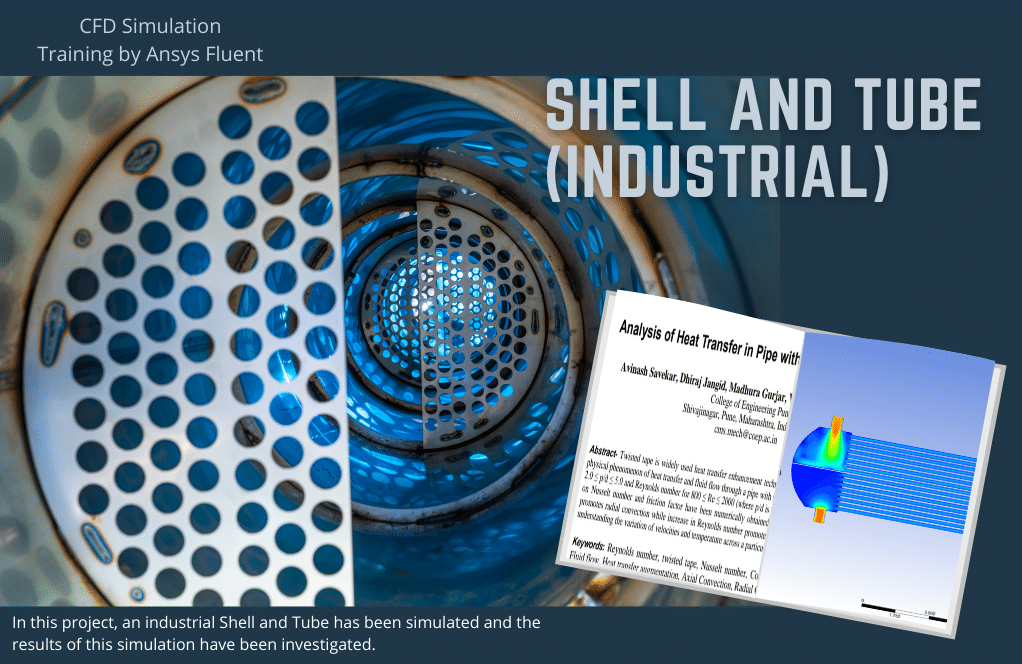
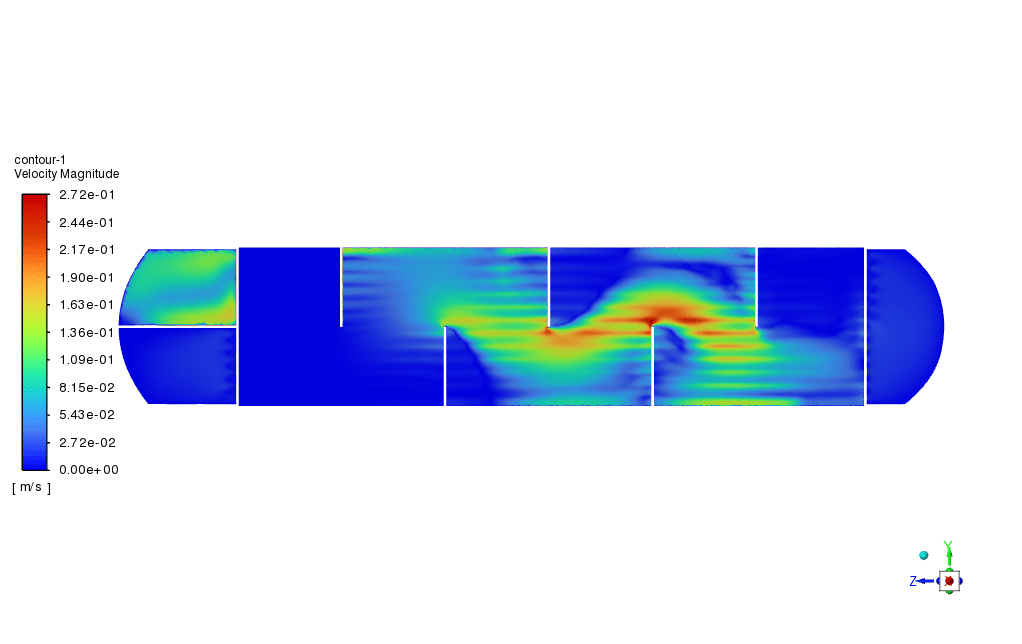
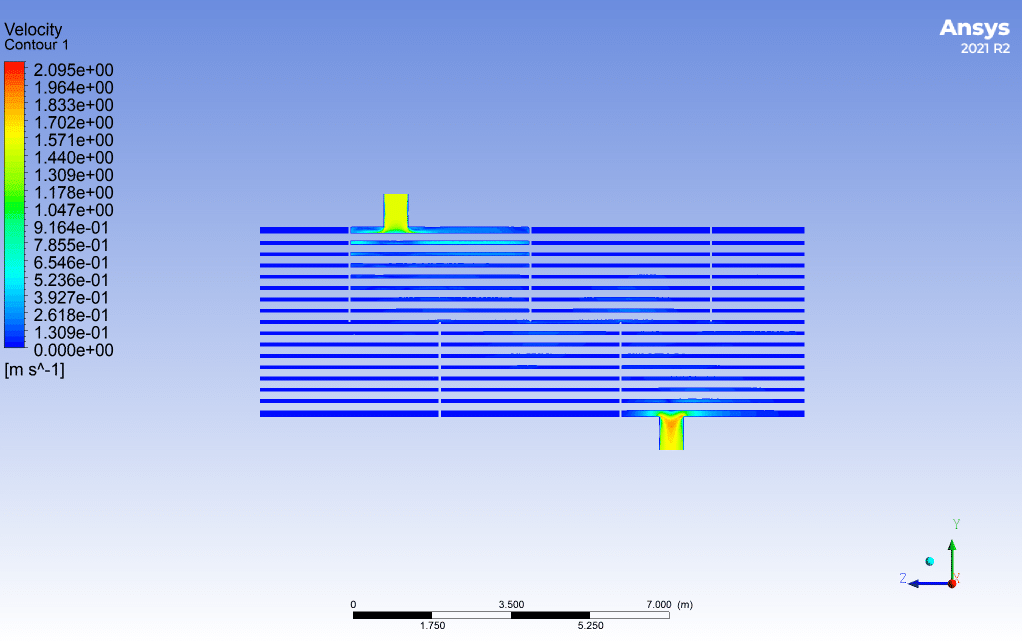
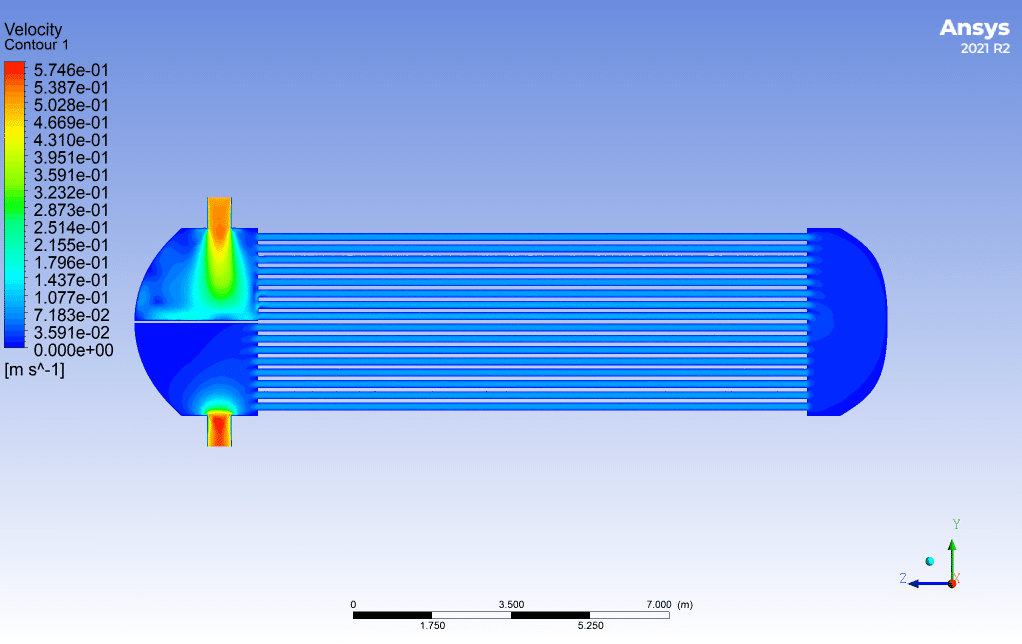
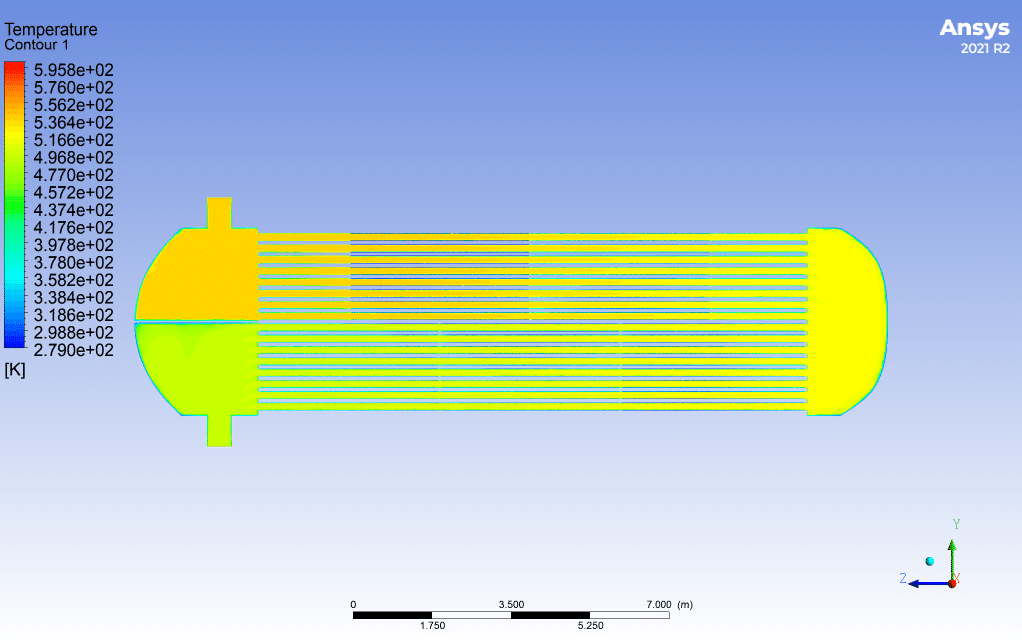
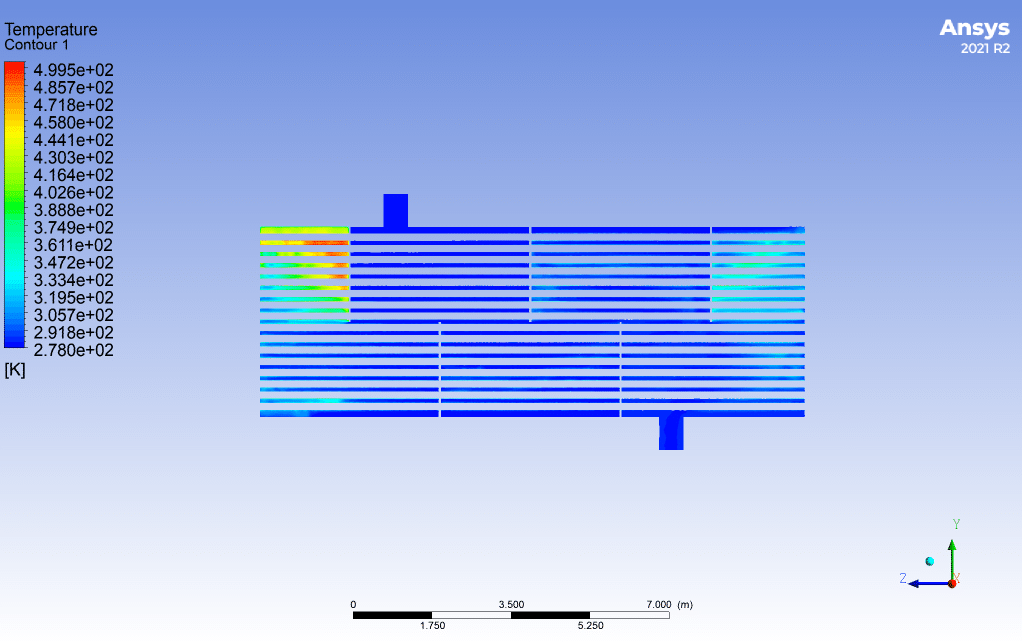
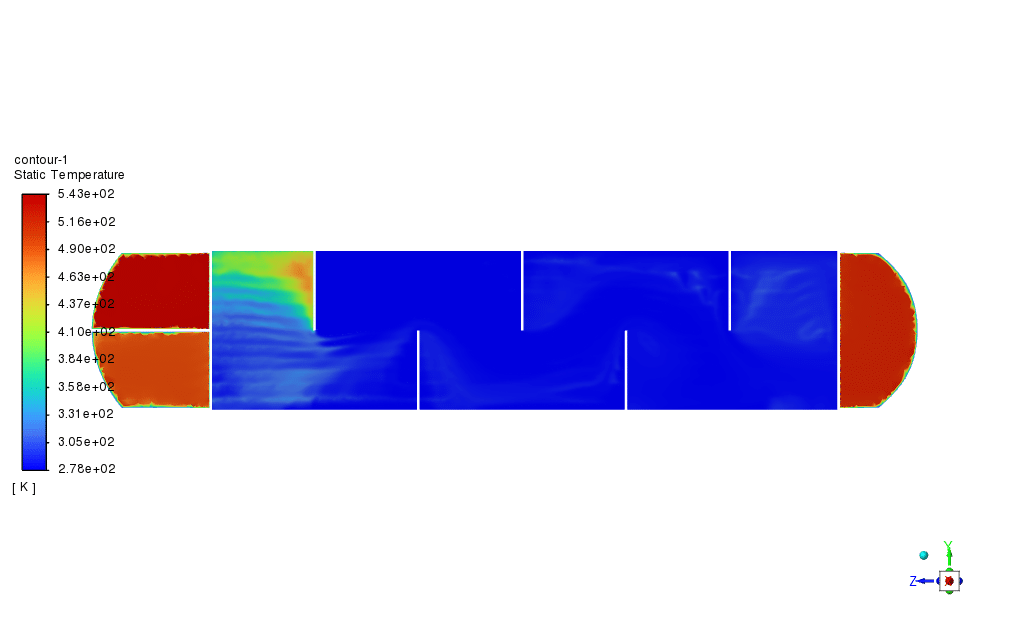

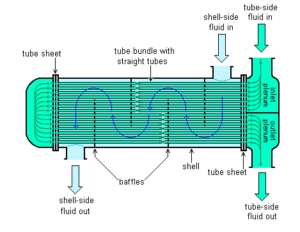
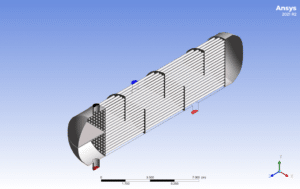
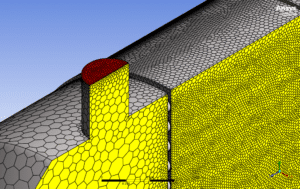
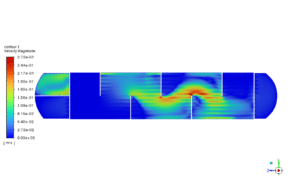
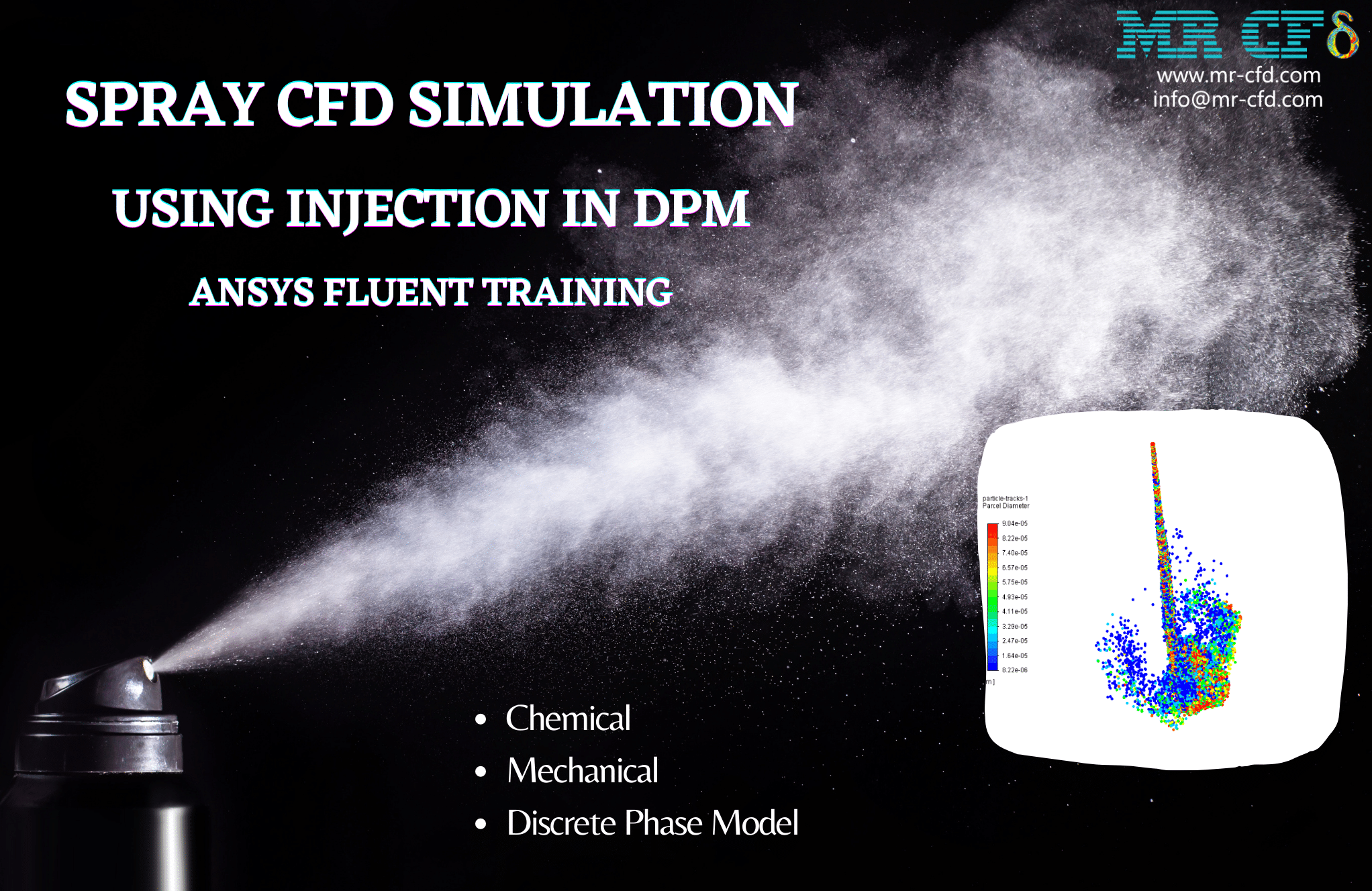
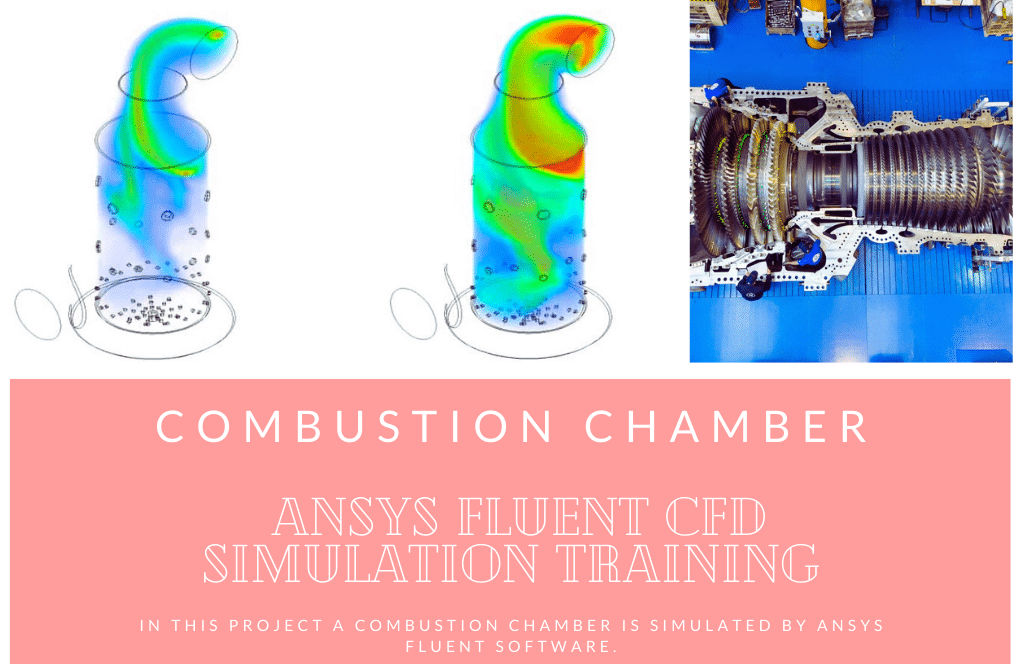


Renee Gislason –
What was the reason for choosing the k-epsilon turbulence model in the simulation of the shell and tube heat exchanger?
MR CFD Support –
The k-epsilon model is known for its robustness, reliability, and computational efficiency, which makes it a common choice for industrial applications involving turbulent flow, like the simulation of a shell and tube heat exchanger as described in this study.
Ford Walsh –
The learning content on the shell and tube heat exchanger simulation was exceptional. It detailed the design, operation, and benefits of these systems, especially in an industrial application like refineries. The step-by-step explanation of the simulation process also provided great insights into using ANSYS software for design verification and achieving efficiency in temperature regulation.
MR CFD Support –
Thank you for your positive feedback! We’re delighted to hear that you found the learning materials helpful and insightful. It’s gratifying to know that our detailed explanations on shell and tube heat exchanger simulation were able to enhance your understanding of its application in refineries using ANSYS software. Your satisfaction is our priority, and we look forward to continuing to provide you with valuable learning experiences.
Crystel Swift –
This review of the Shell and Tube Heat Exchanger Numerical Study is just glowing! The extensive insight into both the historical context and practical applications of the heat exchanger really made it clear how valuable this product is for industry professionals. The notion that the simulation adheres to TEMA standards and achieves the desired outlet temperature showcases the product’s effectiveness and reliability.
MR CFD Support –
Thank you very much for your comprehensive review and for highlighting the strengths of our Shell and Tube Heat Exchanger Numerical Study. We’re thrilled to hear that our attention to real-world applications and design standards meets the practical needs of professionals in the field. Your appreciation motivates us to continue delivering high-quality and accurate simulation products.
Lindsey Price –
I was impressed by the detailed simulation for a shell and tube heat exchanger! It’s exactly what we need for our refinery process improvement project. The integration between the TEMA standards and software capabilities really brings the design to life.
MR CFD Support –
Thank you for your kind compliment! It’s fantastic to know our product meets your expectations and can contribute to your refinery process improvements. We strive to provide accurate simulations that adhere to industry standards for the best outcomes.
Ahmed Durgan –
I’m impressed with the comprehensive simulation of the shell and tube heat exchanger for industrial use. The details about design, operation, and simulation are meticulously detailed. An impressive work!
MR CFD Support –
We are truly grateful for your positive feedback on our Shell and Tube Heat Exchanger Numerical Study. Thank you for recognizing our thorough approach and detailed simulation work. Your satisfaction is our top priority, and we’re pleased we met your expectations. If you need further assistance or information about our products, please don’t hesitate to contact us.
Prof. Barbara Brakus –
The simulation results are impressive! I especially appreciate the detailed explanation and the clear presentation of input and output temperatures. It makes understanding the efficiency of this shell and tube heat exchanger so much easier.
MR CFD Support –
Thank you for your kind words! We are delighted to hear that you found the simulation results and the detailed explanations in our study helpful. Our team always strives to provide clear and comprehensive information to assist users in understanding our products fully. Your feedback is greatly appreciated!